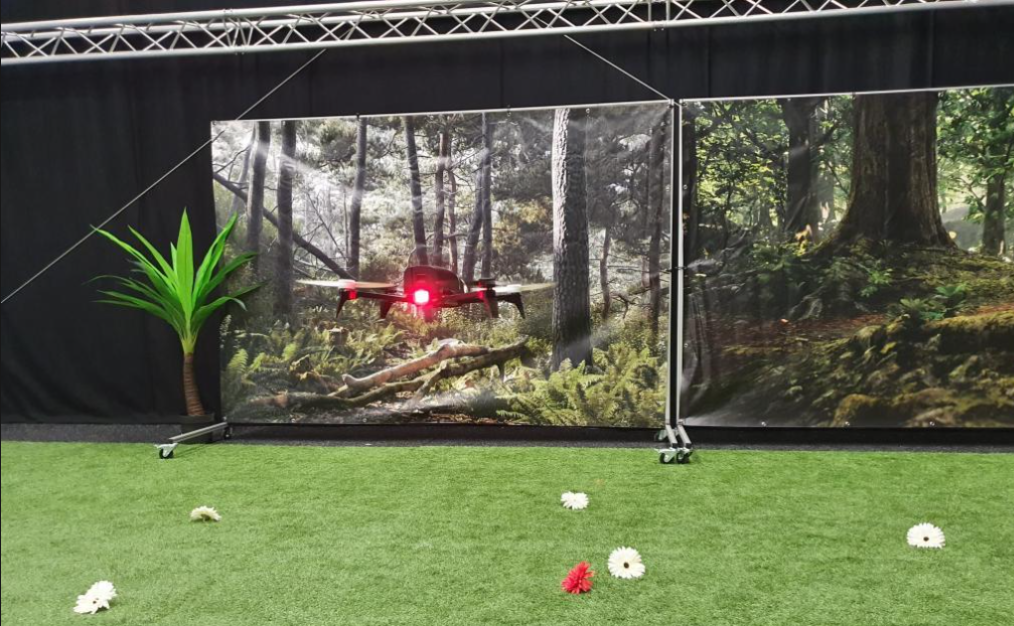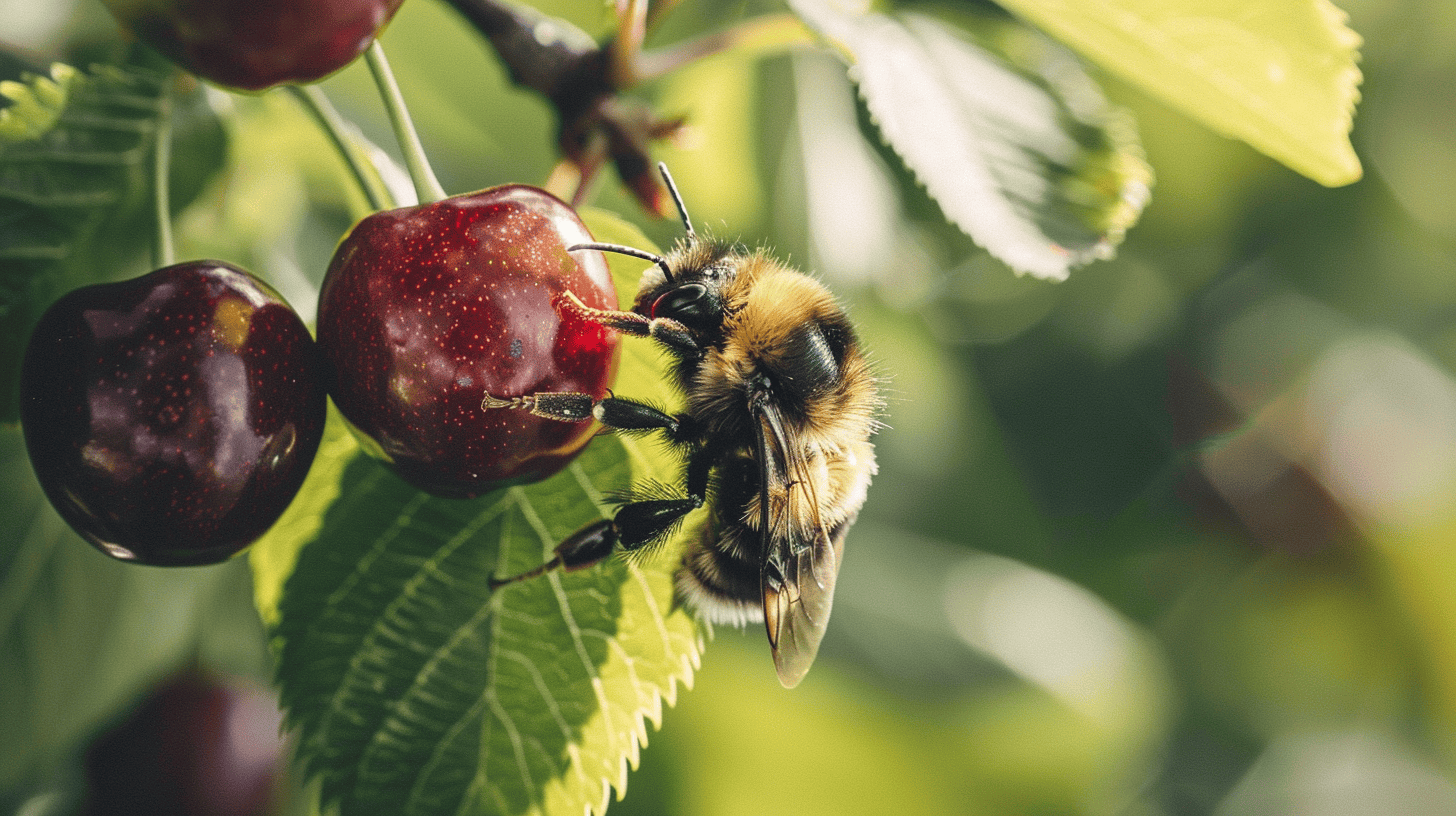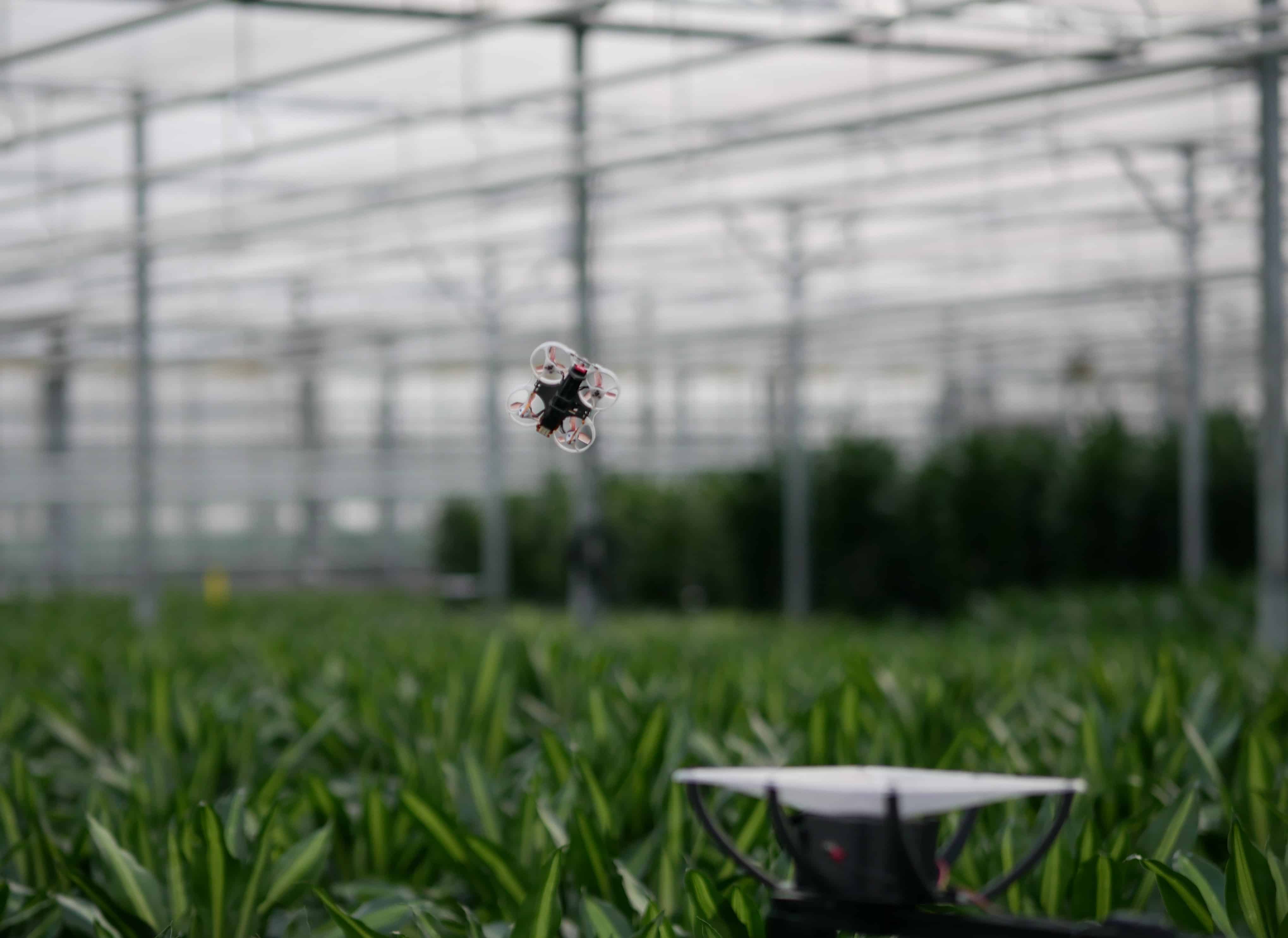
It seems that it does all start with the birds and the bees. Scientists at Delft University of Technology (TU Delft, The Netherlands) and the Westphalian University of Applied Sciences (Germany) have developed a method whereby drones can learn how to fly and avoid objects and land as smoothly as a bee. The research also offers new insights into the intelligence of insects. The findings were published this week in the professional journal Nature Machine Intelligence.
Insects use a technique called ‘optical flow’ when flying and landing. They can determine the speed at which objects move through their field of vision. When landing, for example, they also perceive how fast a leaf or a blade of grass is approaching them in their flight path. By reducing their own speed in time, they know how to make a smooth landing.
Drones and other flying robots depend on onboard sensors and processors for their flight performance. Obviously, they will fly better if they are equipped with more navigational systems. But they then also become heavier and larger. Which is why scientists have started looking at how insects manage to navigate their way through the maze of flowers, leaves and twigs with hungry birds and swatting human hands.
Optical flow
“We started working with this optical flow technique out of enthusiasm for the elegant, simple strategies that flying insects use,” Guido de Croon said in a TU Delft press release. He is professor of Bio-inspired Micro Air Vehicles and first author of the paper. However, it turned out to be more difficult than first assumed. “For example, at one point our flying robots did not land, but kept oscillating just above the surface – in other words, going up and down.”
Two fundamental problems are at play here. Optical flow provides only combined information on distance and speed. But not about distance or speed separately. For example, if two drones are about to land and one of them is flying twice as high and fast as the other, they are both perceiving the same optical flow. However, they must respond to the changing divergence of the optical flow. If a drone does not adjust its responses to its altitude when landing, it will never land on the ground, but will continue to oscillate above it. In addition, the researchers say, the optical flow in the flight direction of the drone or robot is very small. This makes obstacles very difficult to detect.
Estimating distances
To solve that problem, De Croon came up with the idea of teaching robots that are equipped with artificial intelligence (AI) to estimate distances. The scientist had also recently developed a theory on this. According to him, flying robots should be able to determine distances by actively oscillating. By doing that, robots learn for example what grass looks like from different distances when landing, or how thick tree trunks are at different distances when flying through a forest.
“This resulted in much faster and smoother landings than before,” says Christophe De Wagter, a researcher at TU Delft and co-author of the paper. The drones now detected obstacles in their flight path accurately and managed to avoid them.
Intelligent insects
The findings also yielded a new hypothesis about insect intelligence. “The learning process presented here offers a new hypothesis as to how flying insects improve their navigational ability over the course of their lives, for example in order to land. This suggests that we need to do more research on this learning phase,” says Tobias Seidl, biologist and professor at the Westphalian University of Applied Sciences.
Read more IO articles on drones via this link.
Photo: Drones can use oscillation to determine the distance to objects. In this photo, the drone learns to detect and avoid objects in TU Delft’s experimental Flight Arena. (Image: MAVLab TU Delft).








